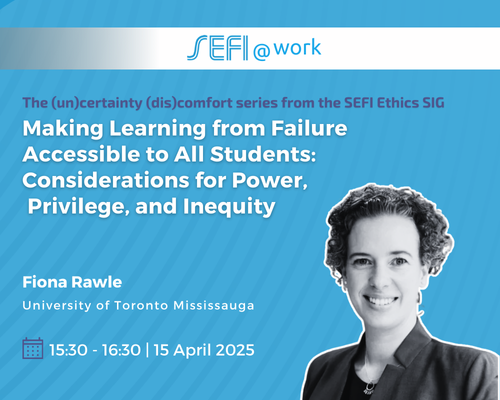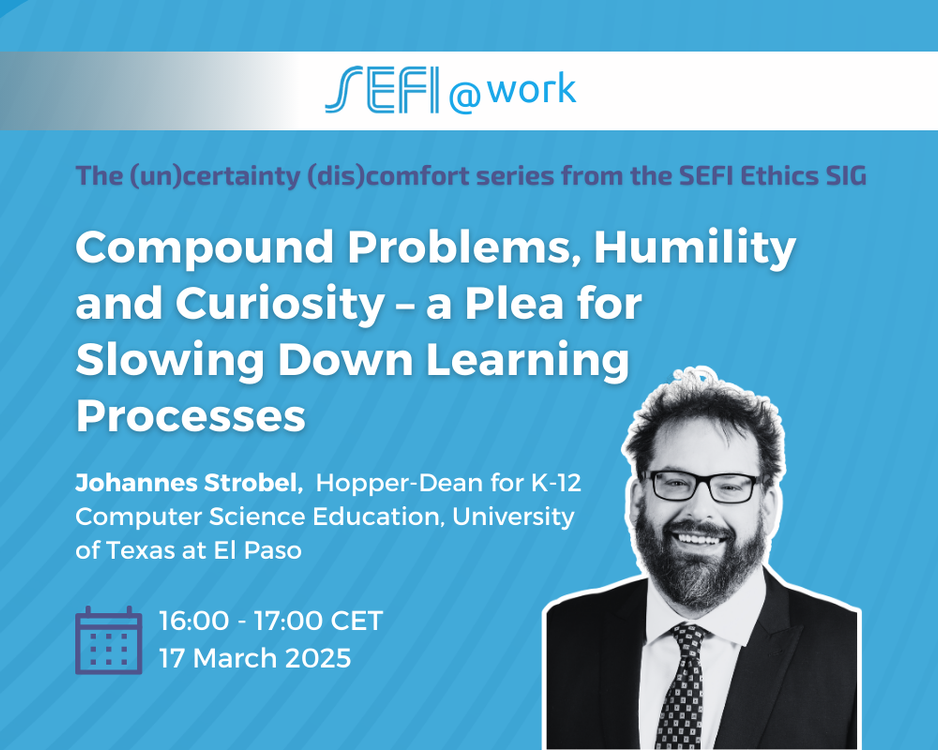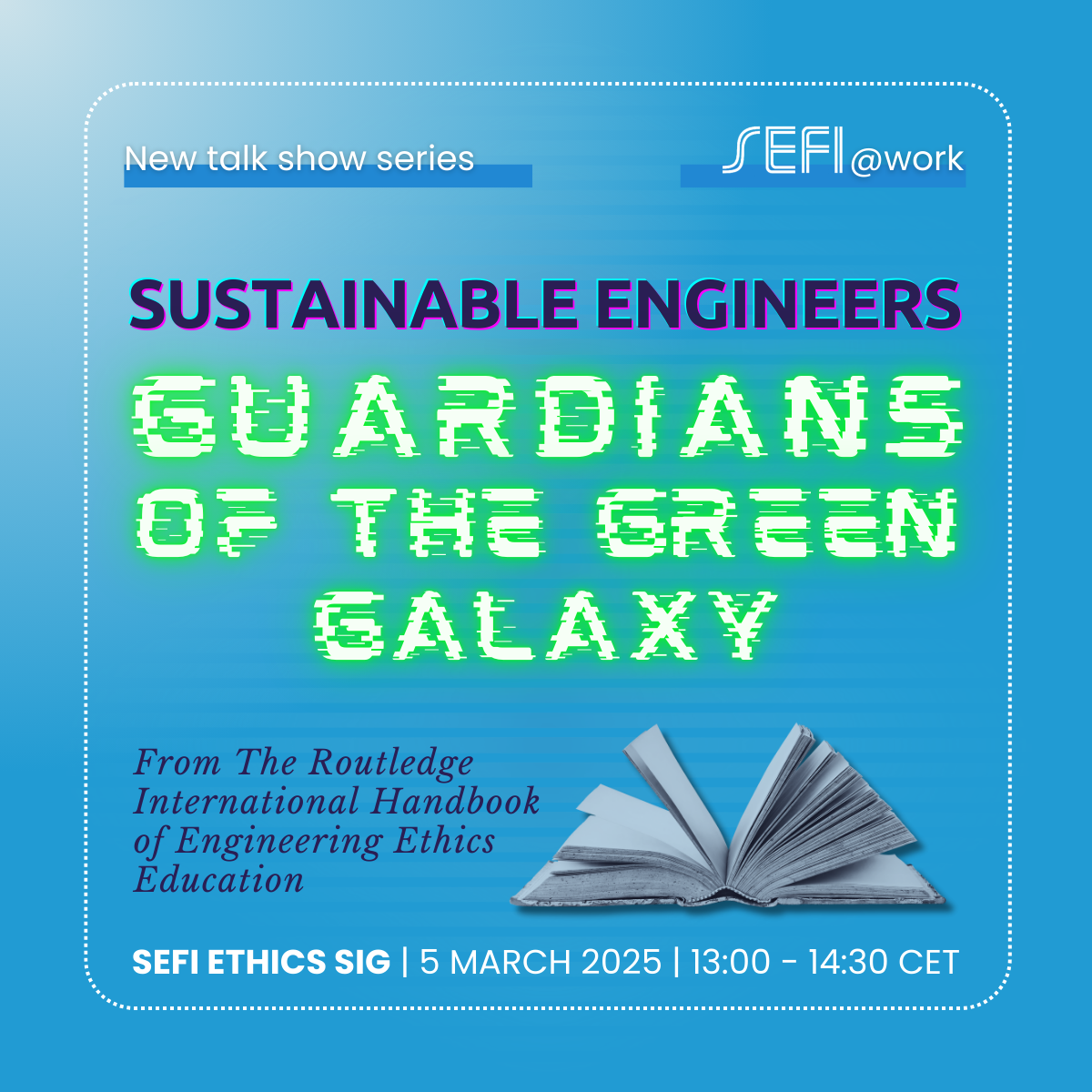15 April 2025, 15:30-16:30 CEST
This webinar will explore the impact that power, and privilege, and inequity play in one’s ability to embrace and learn from failure in the context of higher education.

Gabriel Rashad Burks
UNIVERSITY OF ILLINOIS URBANA-CHAMPAIGN, USA
In user-centered design, a designer spends significant time trying to understand the problem (Figure 1). The user-centered design process entails multiple rounds of divergent and convergent thinking. In particular, the designer must engage others to expand one’s thinking about a problem and then refine the problem statement based on integrated information from multiple perspectives. As designers move from their own perspectives towards the unknown, they continually reform and renew their learning and engagement in the problem (Figure 2). Although design is a critical part of all engineering education, as required by ABET, Inc., this iterative design behavior applied to open-ended problems is often only modeled in engineering curricula in the final, culminating design experience. This presents an ethical dilemma in how we teach engineers to design using closed-ended problem solving approaches in a majority of learning settings.
One challenge that many design instructors face is guiding students through ideation before settling on a particular solution ,. We believe that this is a learned behavior in higher education that is in contrast to the curiosity and inquiry-based learning that we see modeled in the P-12 system,]. This closed-ended, solution-focused problem solving behavior is reinforced in engineering curricula through compressed learning experiences and a lack of open-ended, exploratory problem solving. Indeed, programs that utilize open ended problem solving early in the curriculum see enhanced engagement in exploratory problem solving throughout the curriculum.
If instead, instructors were to empower students to explore and refine problems through engaging with traditionally disengaged stakeholders, the problems that they will identify and solve will likely be more realistic, globally refined, and lead to more impactful solutions. As a consequence, this exercise in broadened divergent thinking will lead to a more thoughtful and refined convergent thinking experience for all involved. This may mean that educators need to move from a teacher-centered instructional model to one that mimics a mediator model. The mediator role is defined as one who selects, organizes and presents stimuli they consider most appropriate for the learner. An outcome of learning mediation is the production of learners who think by solving problems and gain knowledge by using strategies that permit them to learn using their preferred cognitive styles and develop all the potential they have for increasingly complex and abstract levels of knowledge. In this mode, learners have the leading role in their own personal and academic growth and, lastly, to be more effective, independent and critical people.
We propose a few items that can frame tiers to the ethical responsibilities of each party in these open-ended problem-solving learning spaces:
- As instructors, we need to ask better questions and teach our students to ask better questions.
- As leaders & administrators, we need to enable environments for better questions to be asked.
- As students, we need to be unafraid to ask bold and potentially transformative questions.
[1] Unruh, G. U., & Canciglieri Junior, O. (2018). Human and User-Centered Design Product Development: A Literature Review and Reflections. Transdisciplinary Engineering Methods for Social Innovation of Industry 4.0, 211-220. [2] http://www.abet.org/ [3] Tranquillo, J. (2017). The t-shaped engineer. Journal of Engineering Education Transformations, 30(4), 12-24. [4] Ostrowski, A. K., Daly, S. R., Huang-Saad, A., & Seifert, C. M. (2019). Idea Generation Practices in a Biomedical Engineering Capstone Course. IEEE Transactions on Education, 63(2), 118-125. [5] Goodson, M., Sorensen, C., Anderson, M., & Mattson, C. (2019, August). Do Capstone Students Really Understand the Needs of the Customer?: Observations on Students’ Blind Spots Left by Early Program Curriculum. In International Design Engineering Technical Conferences and Computers and Information in Engineering Conference (Vol. 59216, p. V003T04A022). American Society of Mechanical Engineers. [6] Filippi, A., & Agarwal, D. (2017). Teachers from Instructors to Designers of Inquiry-Based Science, Technology, Engineering, and Mathematics Education: How Effective Inquiry-Based Science Education Implementation Can Result in Innovative Teachers and Students. Science Education International, 28(4), 258-270. [7] Kırıcı, M. G., & Bakırcı, H. (2021). The effect of STEM supported research-inquiry-based learning approach on the scientific creativity of 7th grade students. Journal of Pedagogical Research, 5(2), 19-35. [1] Chen, J., Kolmos, A., & Du, X. (2020). Forms of implementation and challenges of PBL in engineering education: A review of literature. European Journal of Engineering Education, 1-26. [8] Yıldırım, V. Y. (2021). The impact of teacher idealism on curriculum literacy: The role of believing in education as a mediator variable: The role of believing in education as a mediator variable. International Journal of Curriculum and Instruction, 13(2), 1548-1563. [9] Church, A., Page, J., Wright, S., & Tayler, C. (2016). Research for learning and teaching. Learning and Teaching in the Early Years, 157.




